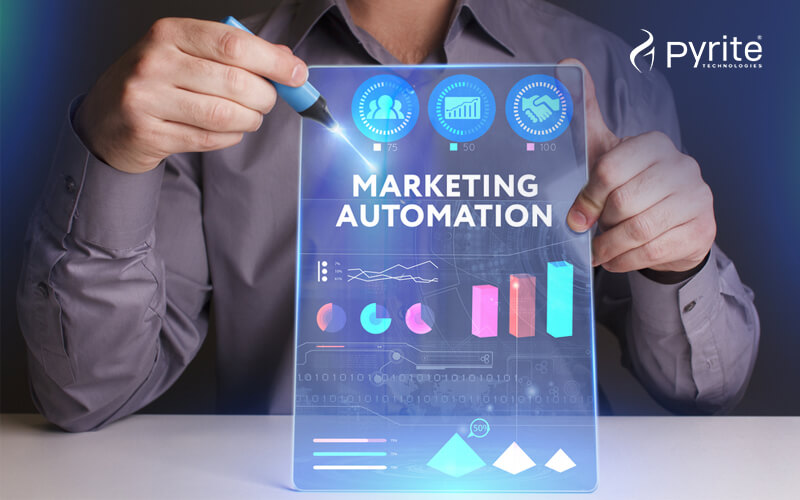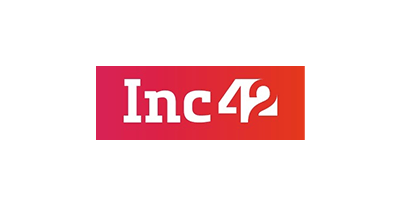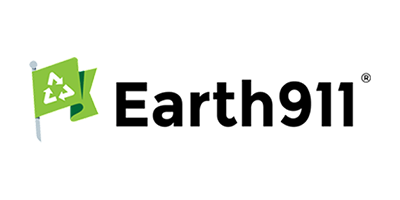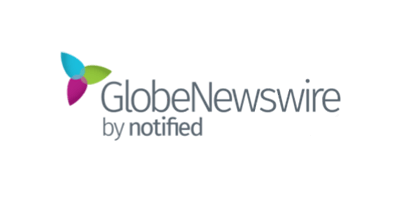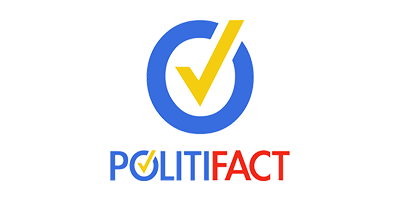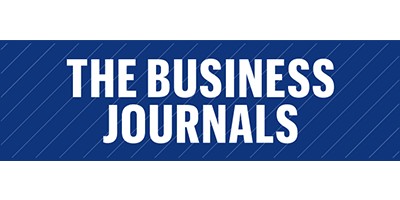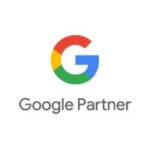
Table of Content
Google is (in)famous for bringing radical changes in its search algorithms, affecting how search engines calculate rankings. The updates keep digital marketers on their toes as they painstakingly alter their online marketing strategies to keep up with the changes, approximately 500 to 600 times each year. Performance max was one such update launched in 2021 for Google Ad users. The transition was phased in as advertisers scrambled to catch the early bird of high-value customers through data-driven, optimised, and streamlined campaigns. With a calibre of acquiring 18% more conversions at a similar cost per action, performance max ads are considered the next big thing for businesses running Smart Shopping and Local campaigns.
Performance Max Vs. Smart Shopping – Key Differences

Performance max, as an online campaign strategy, replaced Google Smart Shopping in 2022. Advertisers who didn’t get a chance to transition their online ad assets saw an automatic conversion of their Smart Shopping campaigns to performance max campaigns. Since Smart Shopping campaigns only supported advertisers to run shopping ads only, the transition was seen as an improvement. Here, performance-based campaigns can quickly run across every possible platform that Google has to offer.
Unlike Smart Shopping, performance max campaigns extend to Google Maps and Discover platforms, expanding the visibility of your ads.
This updated campaign type retains the fundamental features of Smart Shopping but enhances inventory and data insights available to advertisers, though access to all campaign data remains restricted.
However, with the continued limitations on user transparency and data access, this new advent of Google is still at its nascent stage. It might require more updates before PMax becomes the ideal choice for retailers seeking comprehensive optimisation of their advertising endeavors.
Nevertheless, this campaign type is here to stay, and digital advertisers should keep one watchful eye open to any fresh updates and make the most of performance-based campaigns.
Inside of the Unique Google Update – Performance Max

Performance max is a dynamic campaign format designed to empower advertisers in boosting conversions across various Google advertising platforms. It spans across multiple channels such as Search, Display, Discover, Maps, Gmail, and YouTube, providing a comprehensive reach for businesses.
This campaign type allows advertisers to establish their specific conversion objectives, which are subsequently leveraged by automated bidding technology to optimise ad placements and maximise results. For retailers, it’s a strategic tool to enhance visibility and engagement across diverse ad formats, driving better performance aligned with their set goals.
Additionally, performance max enables easy campaign optimisation in real-time and across channels with the help of Smart Bidding. The latter is Google’s AI-driven automated bidding platform commonly used in Smart Shopping campaigns.
Performance max campaigns serve a singular purpose, namely, having a single-campaign optimisation protocol across all advertising platforms. Campaign targets are typically based on Audience Signals and your company’s bidding strategy.
This unique goal-based campaign type allows advertisers to access all of their Google Ads inventory from a single campaign.
Performance max campaign structure is pretty distinct and hones some characteristics, such as:
- A minimum quantity of various asset types is necessary.
- These assets are clustered within an exclusive collection termed an AssetGroup, specifically tailored for Performance Max campaigns.
- Machine learning autonomously generates these assets.
- Each campaign requires a minimum of one asset group.
- The campaign assets are automatically paired based on the type of Google Ad channel targeted.
- Google automation powered by machine learning generates additional video assets to cover all channels.
- Users can pause auto-generated video assets and upload their own custom video.
Additional Features of Performance Max to Exploit

Even after the initial rollout of new updates, Google keeps upgrading them with new features and add-ons, explicitly to help advertisers make the most from these advertisement assets. In 2023, Google announced some additional features to elevate the goodness of performance max campaigns.
One of the latest add-ons is combining broad match keywords with Smart Bidding to experience incremental conversions across all advertising channels, as stated before. By leveraging the keywordless AI technology, PMax analyses landing page content, assets and product feed to unearth new convertible queries, thereby enabling the generation of relevant text ads matching the targeted audience’s intent.
Some of these additive search opportunities, aka the unique features of PMax, are listed below:
- Combining AI-powered Search with performance max enables users to discover fresh converting queries and optimise conversions across Google’s platforms.
- Account-level negative keywords are now in place to ensure brand suitability across Search and Shopping campaigns, allowing you to exclude specific traffic from reaching your ads.
- Moreover, campaign-level brand exclusions offer control over the brands your campaign aligns with, specifically for Search and Shopping traffic.
- Experiments serve as a trial run, providing insights into how incorporating a new performance max campaign could impact conversions or conversion value.
- Within the performance max campaign workflow’s Assets section, a recently introduced video creation tool enables the development of top-notch video assets.
Maximising Conversions with PMax – The Powerplay of Performance and Search Ads

AI-driven Search and performance max collaboratively optimise conversions across the entirety of Google. You can enhance Search campaigns by merging broad match keywords with Smart Bidding. Performance max extends this capability, enabling the generation of additional conversions across all Google ad channels, including Search. Leveraging advanced AI technology without the need for keywords, it scrutinises landing page content, assets, and product feeds (if available) to uncover new converting queries. This process generates relevant text ads tailored to match user intent. These supplementary search prospects not only boost performance on YouTube, Display, Discover, Gmail, and Maps but also unlock added potential beyond existing avenues.
Here are different ways both work in coordination to give you the best possible outcome:
- Performance max supplements current Search campaigns while upholding your keyword targeting preferences.
- If a user’s query exactly matches an eligible Search keyword of any match type, your Search campaign takes precedence over performance max.
- When the query doesn’t precisely match an eligible Search keyword, the campaign or ad with the highest Ad Rank, considering creative relevance and performance, gets chosen.
- Occasionally, existing keywords might appear in performance max instead of the Search campaign due to ineligibility factors.
- A Search keyword may be ineligible to trigger an ad if:
- The campaign is constrained by budget.
- It demonstrates low search volume status.
- All creatives or landing pages in the ad group are disapproved.
- Not all targeting criteria for the campaign or ad group are met.
- Search themes receive similar priority as phrase match and broad match keywords.
Performance Max Benefits – Unlocking the Value Proposition for Advertisers

Performance max harnesses artificial intelligence to deliver businesses the most pertinent assortment of ad creatives across various devices and marketing platforms.
Some of the unique benefits of this Google update would be:
Easy Ads Optimisation
By leveraging machine learning and ad assets, the campaigns and their budget across Google’s properties are easily optimised. This ensures the delivery of the most fitting ad campaign serving your intent and that of your prospects. In a suitable format, the campaigns are precisely timed to enhance your conversion rates. In many respects, PMax represents the evolution of Google Ads automation. It handles bid strategy definition and management, enabling you to concentrate on delivering exceptional service or products to your customers.
Improve Visibility
Performance max campaigns utilise Google’s machine learning to streamline campaign optimisation across all Google properties, eliminating the need to set up individual campaigns on each platform. It empowers marketers to engage potential customers across various touchpoints within a unified campaign, enhancing the likelihood of converting them into leads.
Advanced Audience Targeting
Through a performance max campaign, you gain access to diverse targeting capabilities to locate your customers online. Leveraging Google’s up-to-the-minute comprehension of consumer preferences and intent, PMax has the potential to reveal new customer segments that might have been previously unnoticed. When combined with your customer data and other audience signals, a performance max campaign structure can precisely pinpoint the consumers most inclined to convert with your business.
Enhanced Budget Efficiency
The ROAS determines the success of your online campaigns, but digital ad spending worldwide has skyrocketed to USD 627 billion in 2023. However, the automated ad placement and bidding features of PMax help improve the overall campaign efficiency, including the intelligent placement of ad budgets and proper optimisation of the same. Automation ensures the ad assets are strategically placed at the right time and the budget is rightfully allocated to make the most significant impact. Performance max can easily take care of your bidding and ad placement strategy on your behalf.
Creative Optimisation
Google’s algorithm for performance advertising can dynamically enhance your creative elements, including headlines, descriptions, images, and videos based on audience reactions, in real time. By leveraging the search engine’s machine learning, these campaigns continuously test various combinations of your supplied creatives in order to retain the most effective ones across all platforms. This approach elevates engagement and drives increased conversions.
Better Search Performance
The seamless integration of PMax campaigns alongside your existing search campaigns is probably one of the unique standout aspects. The potential search gaps are usually filled to boost your conversions across the entire ads account. Also, a gradual transition is feasible, meaning, you begin with one campaign to gauge its performance, and progressively introduce other performance max campaigns to complement and enhance results. This flexibility allows for a more adaptable implementation process.
Dissecting the Performance Max Campaign Structure – How Does it Work?

Performance max aids in achieving your set conversion objectives, enhancing conversions and value by dynamically optimising performance across channels in real-time through Smart Bidding. Google AI is employed to improve bidding, budget allocation, audience targeting, creative elements, attribution, and beyond. These components operate in synergy with specific advertising goals, such as CPA or ROAS targets, in conjunction with the creative assets, audience cues, and supplementary data feeds you supply.
However, your team has to feed essential data like audience signals, including your customer data, and high-quality text, images, and video to improve the overall campaign performance significantly. Also, account-level brand safety settings are available, enabling you to pass on the message to Google Ads about the types of content where you don’t want your ads to appear.
Performance max harnesses the power of Google AI to elevate your campaign’s effectiveness. You contribute your distinct expertise, including budget allocation, business objectives, and desired conversions for measurement. Google AI then identifies potential customers aligned with your goals, presenting the most suitable ad with an optimal bid to amplify campaign performance.
Through the fusion of Smart Bidding and attribution technology, it discerns the most advantageous choices across all Google inventory, adjusting bids in real time to best meet your business objectives. Augmenting Google AI, the addition of audience signals enriches your performance max campaign.
Auto-generated assets, accessible at the campaign level, assist in generating supplementary resources. As accounts join the beta, these assets become available within campaign-level settings.
Here are a few options to suggest the right time to use performance max campaigns:
- Your advertising objectives should be specific and include, though not limited to, driving online sales, generating leads, and more.
- You aim to optimise your campaign’s performance without being constrained by the ad channel.
- You seek seamless access to all of Google’s advertising channels through a unified campaign.
- You wish to expand the reach and enhance conversion value beyond traditional keyword-based Search campaigns.
Tips to Improve Campaign Performance – PMax Best Practices

Even though it is automated, performance max campaigns require special attention to garner the best possible outcomes for your business. A handful of best practices will help direct your campaigns to the right path to gaining higher conversion rates and more returns.
Here is a list of helpful tips to get you started:
An Undivided Commitment
As a completely automated system, PMax campaigns rely on ample data and machine learning for optimal performance. Plan for a substantial daily budget over a minimum period of one month. Google suggests allocating at least 6 weeks to enable the machine learning algorithm to scale up and gather adequate data for performance comparisons.
Increase Assets – More the Merrier
The greater the number of assets you include, the higher the chances of your ad being eligible to appear across various inventory types. If you’re utilizing a Merchant Center feed, there’s no requirement to upload individual product images. Instead, opt for lifestyle or brand creatives that complement the product feed images.
For those exclusively interested in running Google Shopping campaigns, refraining from adding any additional assets and solely relying on your feed suffices. This approach ensures your campaign delivers Shopping ads alongside Display and YouTube ads, with the latter two appearing in the Shopping format.
Understand the Do’s and Don’ts of PMax
There are certain do’s and don’ts for PMax campaigns to consider and the following list will give you a heads up!
- Bidding: The available bidding strategies are confined to either maximise conversions or maximise conversion value, aligning with the conversion-centric nature of performance max campaigns.
- Location settings: By default, PMax location settings mirror those of any other campaign, set to “Presence or Interest.” If your intent is solely to target individuals in that location, you can switch to “Presence Only.”
- Audience signals: In PMax campaigns, direct audience selection isn’t applicable. Instead, you provide “Audience Signals,” serving as a foundation for Google’s targeting approach. It operates akin to optimised targeting.
- URL expansion: PMax activates URL expansion by default, akin to Dynamic Ads, allowing Google Ads to direct users to landing pages other than your final URL. If this contradicts your objectives, you can deactivate this feature. Alternatively, you may choose to keep it active but utilise URL exclusions if needed.
Leverage the Customer Acquisition Feature
Exclusive to performance max campaigns, this feature enables you to select whether you prefer to target the campaign towards both new and existing customers or solely focus on new users.
Keep Your Asset Groups Optimised
When constructing a performance max campaign, you’ll gather all your assets within an asset group. This group comprises creatives tailored to generate ads suitable for the specific channel where they’ll appear. It’s advisable to organise asset groups according to a unified theme, akin to structuring your ad groups. After setting up the campaign, you can revisit and include supplementary asset groups. Arrange these groups in a manner that aligns with your business strategy, potentially segmenting them based on the products or services you provide.
Know the Campaign Exclusions
Campaign exclusions prevent budget wastage and help improve their efficiency. Implementing campaign exclusions will reduce the volume of products that Google needs to process during the learning phase, effectively expediting the process. A few examples would be:
- Product exclusions: Catalogs not available for purchase.
- Keyword exclusions: Use negative keywords and prevent wasted budget on irrelevant queries.
- Existing customers: Exclude the existing ones to allow your campaigns to focus only on new ones. If the latter is your objective, then check the box ‘Only bid for new customers’ before setting up your campaigns.
Use Ad Extensions
Google Ads extensions, now termed assets, enhance your ad space while amplifying its relevance and appeal through supplementary information. Among the 14 available extensions, such as reviews, locations, call, pricing, promotions, and more, it’s advisable to consider implementing the following:
- Sitelinks: These emphasize and guide users to other relevant pages. Google says that merely using the recommended minimum of four site links can yield an average 20% increase in click-through rates for advertisers.
- Callouts: These concise snippets, each limited to 25 characters, spotlight selling features or key unique selling propositions (USPs). A minimum of 8 callouts is recommended.
- Structured snippets: These showcase specific products, services, or features in a list format.
Keep Your Data Feed Intact
For advertisers utilizing the Merchant Center to submit products via a data feed, it’s crucial to incorporate as much relevant information as feasible within your feed. Ensure the information remains current and relevant to optimise its effectiveness.
Optimise the Audience Signals
Enhance Audience Signals by leveraging your authentic business data, giving priority to this data over relying solely on Google’s interests, which encompass in-market and affinity audiences.
A few examples would be:
- Select customer lists as your primary option if you possess sufficient customer data and permission to utilise it for advertising purposes. These lists yield substantial power by leveraging actual customer data to discover new prospects.
- Customer intent audiences elevate Google’s interests by incorporating relevant keywords, intensifying the targeting approach.
- Website visitors serve as a valuable alternative. Crafting audience signals based on website visitors or converters is always a beneficial strategy.
The Final Takeaway
Performance max campaigns have the potential to reveal untapped opportunities for advertisers and businesses that have gone unnoticed before. From expanding across various channels to accessing new advertising avenues, they enable finding fresh customers and leveraging Google’s automation and machine learning technologies for maximum benefit. This new update from Google will allow you to convert your ad spending into profitable returns, scaling your business growth potential better than before.


